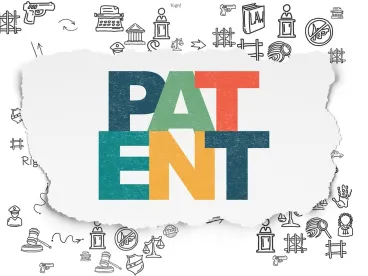Following the Patent Trial and Appeal Board’s (PTAB) Precedential Opinion Panel’s selection of Hulu, LLC v. Sound View Innovations, LLC[1] as precedential, on January 23, 2020, the PTAB issued a non-precedential decision in Cisco Systems, Inc. v. Centripetal Networks, Inc.[2] In Cisco, the PTAB provided yet more discussion of criteria for determining whether a printed document – in this case, a user manual – may qualify as prior art against patent claims under attack in a PTAB post-issuance proceeding.
Legal Standards for Public Accessibility
Cisco involved, among other things, whether a product’s user manual was a “printed publication” for purposes of the patent statute.[3] In discussing the issue in Cisco, the PTAB cited all of the same case law as in the Hulu decision.[4]
Whether a document is a printed publication depends on whether it is “publicly accessible”.[5] Public accessibility is a fact-specific determination.[6] There are two basic types of public accessibility. One is based on searchability (for example, in a database, or in a properly-indexed library catalog),[7] and one is based on dissemination (for example, at a conference or trade show).[8] Generally, “A given reference is ‘publicly accessible’ upon a satisfactory showing that such document has been disseminated or otherwise made available to the extent that persons interested and ordinarily skilled in the subject matter or art exercising reasonable diligence, can locate it.”[9]
The technology employed to disseminate a document can affect the determination of whether the document qualifies as a “printed publication”.[10] It is not necessary for a petitioner to “establish that specific persons actually accessed or received a work to show that the work was publicly accessible”.[11] “In fact, a limited distribution can make a work publicly accessible under certain circumstances.”[12]
The Sourcefire User Manual
The Petitioner, Cisco Systems, Inc., relied on a user manual for a product called the Sourcefire 3D system to allege that all of the patent claims under attack were unpatentable. To support the Sourcefire manual’s status as prior art, Cisco submitted a declaration from Sourcefire’s former Documentation Manager and Director of Technical Publications and Certifications. Through this declaration, Cisco presented evidence of the following:
-
Sourcefire included a copy of the Sourcefire manual on documentation disks with each such product that Sourcefire sold.[13]
-
The Sourcefire manual was available “for download by persons who had received a login and password from Sourcefire, Inc. to its support website”.[14]
-
Approximately 586 customers purchased the Sourcefire 3D System from April 2011 through March 2013 and had access to the Sourcefire manual.[15]
-
On or about April 2011, the Sourcefire manual would have been posted to Sourcefire’s customer-facing support website.[16]
In opposition, the Patent Owner, Centripetal Networks, Inc., argued, among other things, that the login/password requirement, and disk distribution “only to a small subsection of the public [586 customers]” were insufficient to show public accessibility.[17] Centripetal also argued that Cisco had made no showing that a person of ordinary skill in the art “would have or could have found Sourcefire through mere reasonable diligence”.[18] Centripetal cited lack of indexing of the manual, and lack of evidence of availability to non-customers, as evidence of lack of public availability.[19] Centripetal also cited the high cost of the Sourcefire 3D System as weighing heavily against a finding of public accessibility.[20]
The PTAB’s Analysis
The PTAB found that the Sourcefire 3D user manual was publicly accessible, noting the lack of dispute as to the public sale of the underlying product, and as to the inclusion of a copy of the manual with every sale.[21] The PTAB also found that the number of sales (586 over two years) did not support a finding that sales were restricted, or that cost was prohibitively high.[22] There was no obligation of confidentiality on any customer, either.[23]
In addition, the PTAB found that 586 sales, each including a copy of the manual, “far exceeds the number of disclosures recognized under the relevant dissemination law for printed publications,” noting that commercial distribution, and not just free-of-charge distribution, counts toward establishing public accessibility.[24] This last point makes intuitive sense, because a book, magazine, recording, or other commercially distributed product is no less public because there is an associated price.
As evidence of accessibility to persons of ordinary skill in the art, the PTAB pointed to Sourcefire’s regular advertising of its product’s capabilities, and to the status of customers as including “entities interested in network security products, including persons of ordinary skill in the art”.[25]
With respect to indexing, the PTAB found that there was sufficient dissemination of the manual to overcome the need for searchability.[26] In addition, the PTAB held that in this case, actual distribution, even if “only” to customers, was sufficient for public availability because the manual went to all purchasers, with no obligation of confidentiality, and the permission to share the manual for non-commercial purposes.[27]
Finally, with respect to cost, the PTAB noted an absence of any evidence that an interested artisan would have found the cost too high to acquire the manual by purchasing a product.[28]
Takeaways
It is expensive to prepare and file a post-issuance petition at the PTAB. The PTAB follows the Federal Rules of Evidence closely, perhaps more closely than would a district court or other administrative adjudicatory body (for example, the International Trade Commission). Accordingly, before that preparation and filing, a party seeking to use a document other than a US or foreign patent publication as prior art should determine whether it is possible to prove that the document qualifies as a printed publication. The Hulu decision counsels proffering some kind of proof at the time of filing the petition. The Cisco decision provides a potentially flexible example of how a document can qualify as a printed publication.
[1] 2019 Pat. App. LEXIS 11904 (Pat. Tr. & App. Bd., December 20, 2019); publicly available version at IPR2018-01039, Paper No. 29, December 20, 2019.
[2] IPR2018-01436, Paper No. 40, January 23, 2020.
[3] 35 U.S.C. § 102(a)(1).
[4] Compare 2019 Pat. App. LEXIS 11904 at *7-9 with IPR2018-01436 at 21-23.
[5] IPR2018-01436 at 21 (citing Nobel Biocare Servs. AG v. Instradent USA, Inc., 903 F.3d 1365, 1375 (Fed. Cir. 2018)).
[6] Id.
[7] Id. at 21-22 (citing In re Lister, 583 F.3d 1307, 1315 (Fed. Cir. 2009)).
[8] Id. at 22 (citing Medtronic, Inc. v. Barry, 891 F.3d 1368, 1381 (Fed. Cir. 2018)).
[9] Id. (citing SRI Int’l, Inc. v. Internet Sec. Sys., Inc., 511 F.3d 1186, 1194 (Fed. Cir. 2008)).
[10] Id. at 22-23 (citing Samsung Elecs. Co. v. Infobridge Pte. Ltd., 929 F.3d 1363, 1369 (Fed. Cir. 2019)).
[11] Id. at 23 (citing Samsung, 929 F.3d 1363 at 1372).
[12] Id. (citing Samsung).
[13] Id. at 23.
[14] Id.
[15] Id. at 24.
[16] Id.
[17] Id. at 24-25.
[18] Id. at 25.
[19] Id.
[20] Id.
[21] Id.
[22] Id. at 25-26.
[23] Id.
[24] Id. at 26-27.
[25] Id. at 27-28.
[26] Id. at 28.
[27] Id. at 28-29.
[28] Id. at 31.




 />i
/>i

